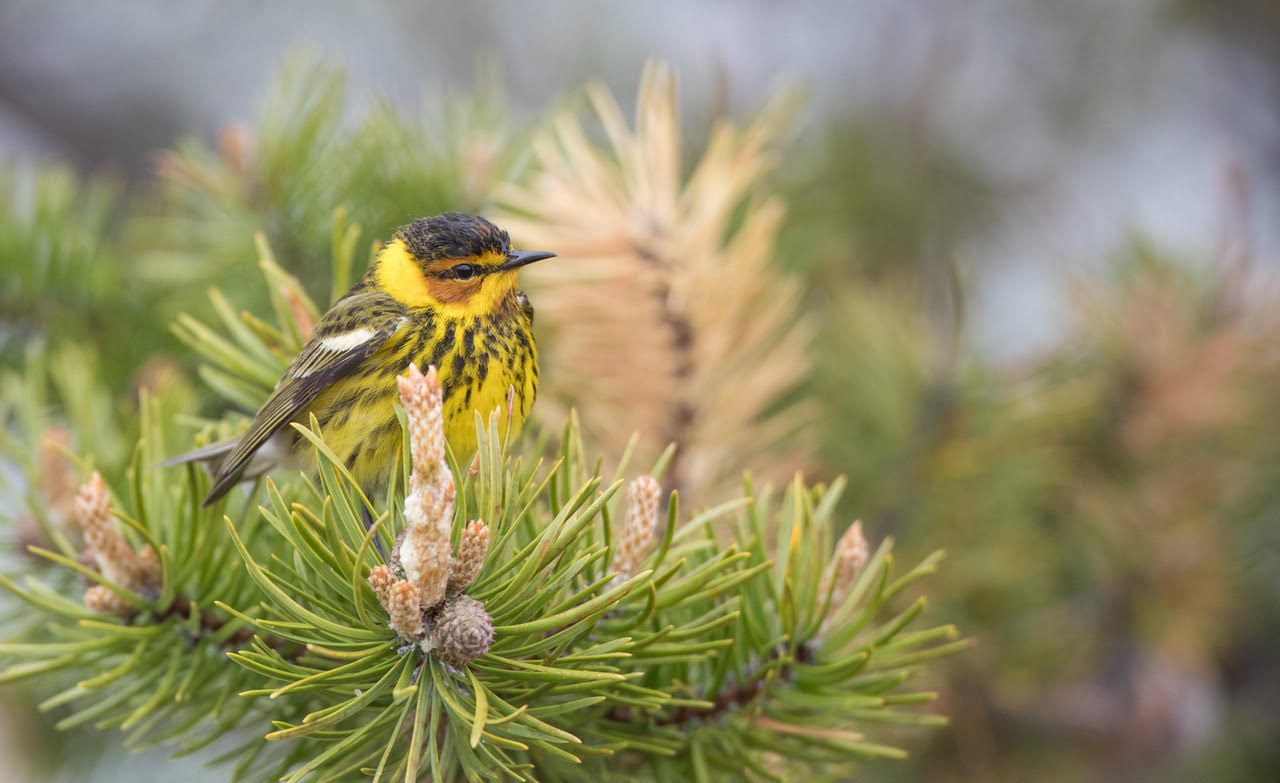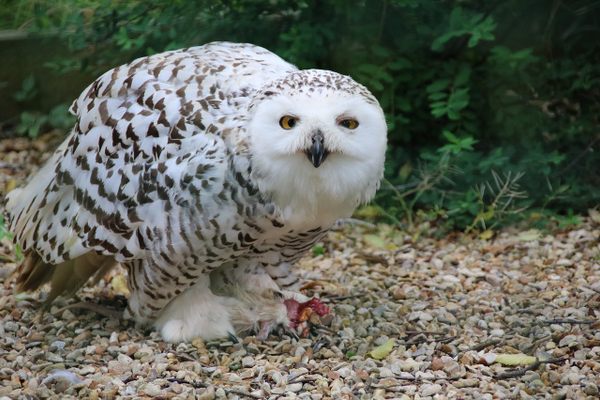Dispatches From Inside a Record-Breaking Bird Migration
What it’s like to find yourself among 721,620 warblers, all in a hurry.

Songbirds fly all night because it’s what they do. Take the Cape May warbler, for example. Every spring, the fist-sized, yellow-and-brown bird takes a trip from the West Indies to the boreal forests of Canada, where it nests, breeds, and feasts on spruce budworms. The journey is nearly 3,000 miles long, and is mostly nocturnal, so that the birds can avoid predators and keep their body temperatures down.*
Humans, on the other hand, generally only travel all night when they’ve got something to see. Take Ian Davies, for example. This past Friday, May 25, 2018, Davies drove from his hometown of Ithaca, New York, to Tadoussac, Quebec, a journey of 600 miles. He and his friends—dedicated birdwatchers all—were hoping to see the warblers.
The weekend was a bust, bird-wise. But on Monday, as morning rain showers began to lift, warblers started flickering past in groups of about a dozen. Around 6:30 a.m., the rain stopped, and, as Davies later wrote, “things were never the same.” The trickle of birds became a torrent. “Solid streams of warblers were moving through: below eye level, over the river, over the trees,” says Davies. At times, more than a thousand birds flew by per minute.
“In our wildest dreams,” Davies says, he and his companions had hoped for maybe a 50,000-bird day. Instead, they found themselves smack in the middle of a group about 10 times that size—one that experts are now calling the biggest North American warbler migration in recorded history. There was nothing to do but hold onto their binoculars and keep counting.
Tadoussac is a small town north of Quebec City, at the junction of two rivers, the St. Lawrence and the Saguenay. Birders may go there on purpose, but most warblers actually find it by accident, waylaid while winging from their winter habitats in Central and South America up to their forest breeding grounds. “Warblers want to come back to the same area where they bred last year,” explains Pascal Côté, the director of the Tadoussac Bird Observatory—but they’re so exhausted from their journeys, many overshoot their intended destinations, like sleepy drivers missing their exits. In the morning, when they’ve realized their mistake, they’ll hop onto a southwest wind, which brings them right over Tadoussac.
May 28 provided the perfect conditions for this kind of course correction, which birders call a “morning flight.” For one thing, there’s a big population this year, thanks to a bumper crop of spruce budworms, a favorite food of many warbler species. For another, the weekend was bad for migration, as Davies and his crew found out when they didn’t see much on Saturday or Sunday. By the time the winds kicked up again on Monday, a huge crowd of birds was ready to head back.
“I think millions flew over Quebec, and all over the whole province,” says Côté, who adds that he has never seen a migration like it. “It’s the biggest one ever [recorded] in North America.” Birds were overtaking lawns and highway medians. Radio stations were flooded with calls from confused residents. (Côté says about 100,000 birds were found dead on Monday, victims of window strikes.)* Weather radar picked up on the flocks as though they were clouds.

Meanwhile, from their spot on the Tadoussac dunes, Davies and his friends were just trying to keep up. “It was basically nine hours of scanning,” says Davies. “A couple of times some of us made food runs to the nearby town to just stay alive.” Counting each individual bird soon became impossible, so they pulled out different techniques.
Some people clocked the rate of passing birds in a particular slice of the sky, and then extrapolated that to cover the whole migration area. Others paid attention to composition, or which type of bird was which, as different species mixed and mingled. “It was like, ‘Whoop! Cape May. Whoop! Bay-breasted,’” describes Côté, who was nearby.
At times, things got a bit Hitchcockian. “Three species flew between my legs,” says Davies. “One flew into my camera.” Another member of the group, Tom Auer, went to stand in a patch of vegetation, and soon had warblers “whipping by my ears [and] my knees… darting around me like I was a tree.” There was so much warbler chatter, “you just had to kind of tune it out,” says Auer. (Davies affirmed that they escaped true disaster: “I don’t think anybody got pooped on,” he says.)

Things ended as quickly as they began. At about 3:00 p.m.—nearly 10 hours after they had first arrived—“birds were still going by at about 20 a second,” says Davies. “Just 20 minutes later, it was only one per second. And then there were no birds moving.” They packed up their binoculars and cameras and headed back inside. Later that afternoon, Davies published an official account of the day in the form of an eBird checklist. (Davies is the eBird project coordinator for the Cornell Lab of Ornithology.) Their final estimate: 721,620 warblers.
This is certainly a guess: Côté thinks the number was maybe closer to half a million, and Davies estimates an error bar of at least 100,000 on either side. But at these bird levels, worrying over exact numbers just feels like nitpicking. “Back home in Ithaca, if you saw a Cape May warbler in your yard in the morning, that would be a highlight you’d tell your friends about at lunch,” says Davies. “Like, one. And we saw over 100,000. It feels like a dream.”
*Correction: This post previously stated that 100,000 birds perished from bird strikes. The number is between 1,000 and 10,000. This post has also been updated to clarify why warblers migrate at night.

















Follow us on Twitter to get the latest on the world's hidden wonders.
Like us on Facebook to get the latest on the world's hidden wonders.
Follow us on Twitter Like us on Facebook